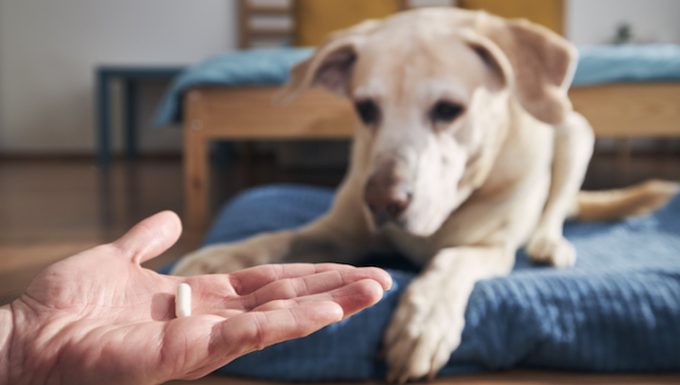Excess iron in the blood in dogs often happens when a dog ingests iron pills or medication. In some cases, the condition can be fatal.
Unfortunately, the symptoms of the condition are often delayed. So it’s important to you make sure your dog does not have access to ingest extra iron.
The condition is sometimes known as iron toxicity.
If you see the signs of excess iron in the blood in your dog, then get to a veterinarian for a proper diagnosis and treatment.
Here’s what you should know about the symptoms, causes, and treatments for the condition.
Symptoms of Excess Iron in the Blood in Dogs
The condition produces a range of symptoms. The symptoms will get progressively worse if the condition is not quickly treated.
For example, some of the most common symptoms include:
- Diarrhea
- Vomiting
- Stomach pain
- Tremors
- Shock
- Dizziness
- Acting lethargic
- Collapse
- Seeming to be confused
- Seizure
Causes of Excess Iron in the Blood in Dogs

The cause of the condition is usually a dog ingesting too much iron. This can often involve household products. For example, some of the common ways to ingest too much iron include:
- Prenatal vitamins
- Multivitamins (for humans)
- Certain fertilizers
- Sachets to absorb oxygen from dried foods
- Iron supplements
Generally, a dog that ingests 20mg per kilogram of weight will have too much iron in their blood.
Treatments for Excess Iron in the Blood in Dogs
Firstly, your vet will ask about your dog’s symptoms. Secondly, your vet will ask about any circumstances where your dog could have ingested too much iron.
Thirdly, a full physical examination will be carried out.
Blood and urine tests will also be taken. The subsequent results of the tests can show how much iron is in your dog’s blood.
Treatment usually begins with fluid therapy. This is to help correct the balance of your dog’s bloodstream.
Sometimes, iron pills can be removed from your dog’s stomach. Medication or induced vomiting can achieve this.
While recovering at home it is important to provide your dog with a quiet and calm environment. Also, keep up regular visits with your vet to monitor their blood enzymes and recovery.
Finally, remember to always consult with your vet before giving your dog any supplements.
Have you ever cared for a dog who suffered from this condition? How did your vet help your dog recover? Let us know in the comments section below.




